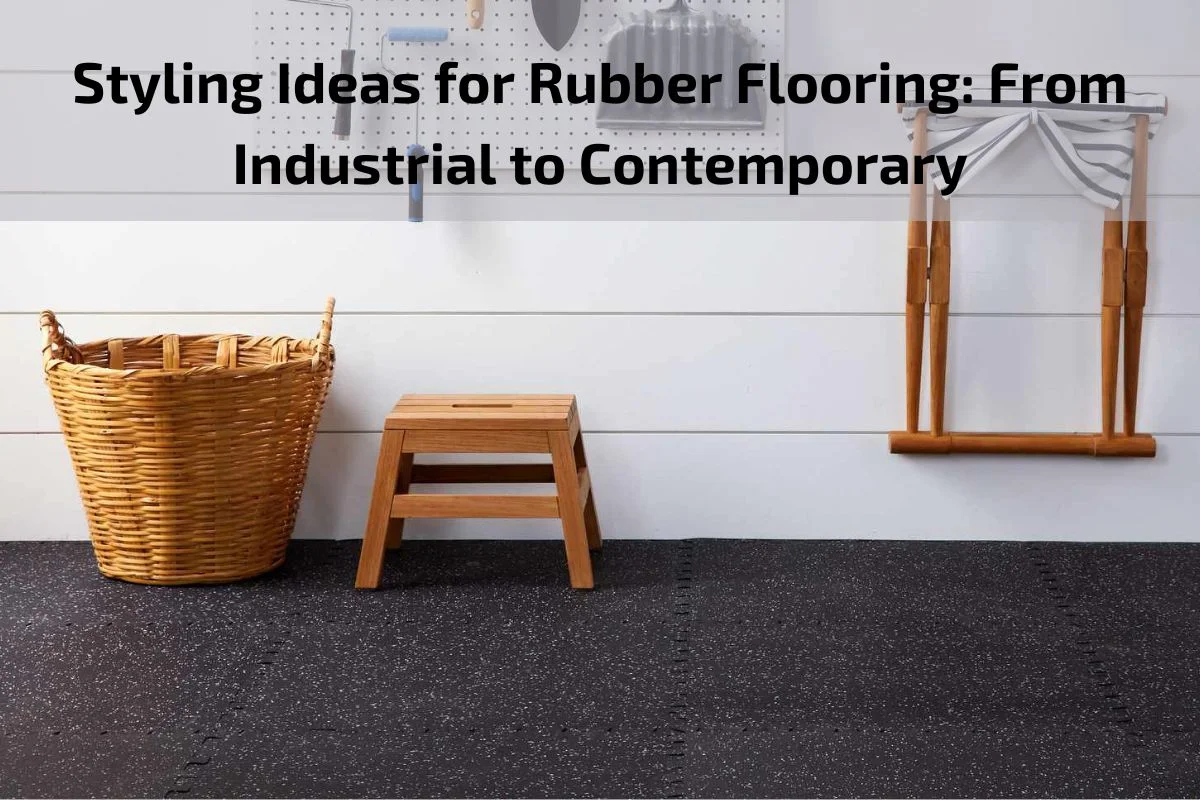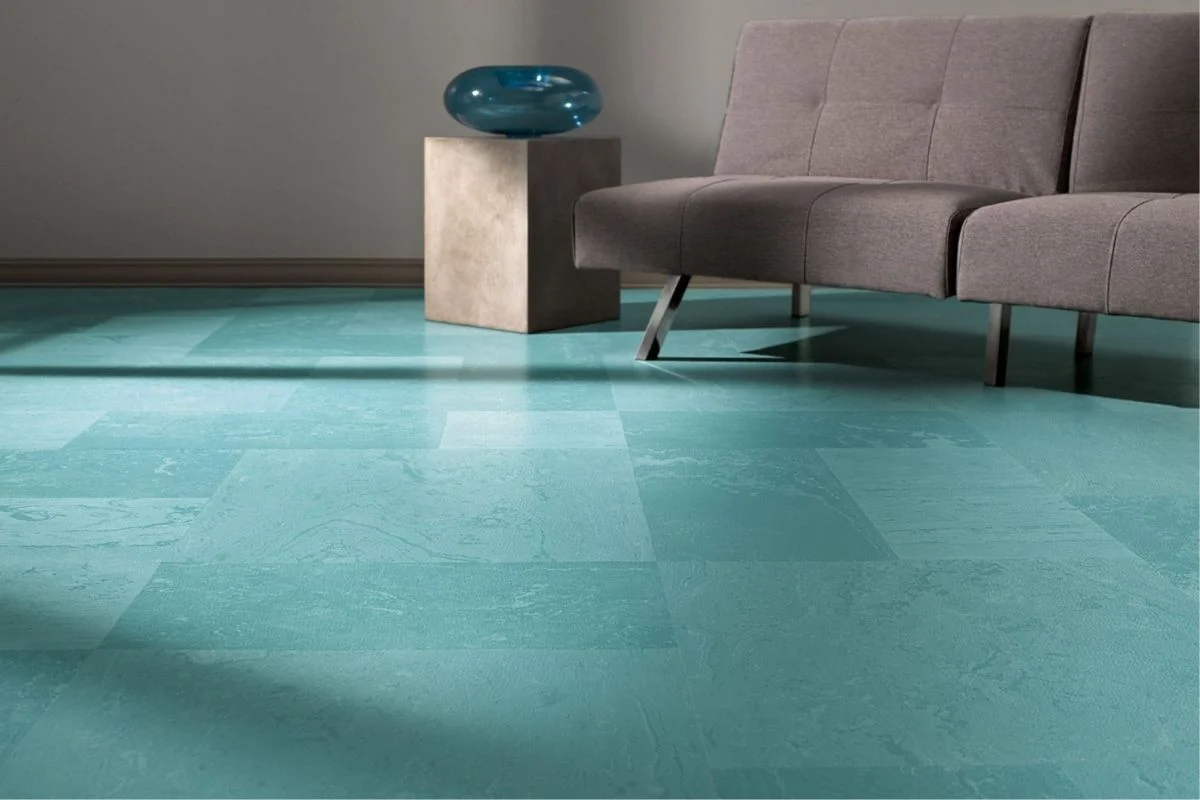Styling Ideas for Rubber Flooring: From Industrial to Contemporary
Rubber flooring has come a long way from its industrial origins and is now a popular choice for both residential and commercial spaces. Its durability, comfort, and versatility make it an attractive option for various design styles, from industrial-inspired interiors to sleek contemporary spaces. In this article, we’ll explore a range of styling ideas for rubber flooring, showcasing how it can be used to create different looks and atmospheres in your home or commercial environment. Whether you’re aiming for an edgy industrial vibe or a modern, minimalist aesthetic, rubber flooring offers endless possibilities for expressing your personal style while enjoying the practical benefits it provides. Join us as we delve into the world of rubber flooring and discover how it can transform your space into a stylish and functional haven.
Brief overview of rubber flooring
Rubber flooring is a versatile and durable option for various residential, commercial, and industrial settings. Made from natural or synthetic rubber materials, it offers a range of benefits, including resilience, comfort, and ease of maintenance. Rubber flooring is known for its ability to withstand heavy foot traffic, resist water and stains, and provide excellent shock absorption, making it ideal for gyms, playgrounds, kitchens, and other high-traffic areas. With advancements in manufacturing techniques, rubber flooring now comes in a variety of colors, patterns, and textures, allowing for creative and customizable design options. Additionally, its eco-friendly properties, such as being recyclable and made from sustainable materials, make rubber flooring a popular choice for environmentally-conscious consumers. Overall, rubber flooring is a practical and versatile solution that combines durability, comfort, and sustainability for a wide range of applications.
Importance of Rubber Flooring choices in interior design
Rubber flooring choices play a significant role in interior design, offering a range of benefits and aesthetic possibilities. Here’s why rubber flooring is important in interior design:
Versatility: Rubber flooring comes in various colors, patterns, and textures, allowing for versatile design options. Whether you’re aiming for a sleek and modern look or a more playful and vibrant atmosphere, rubber flooring can be customized to suit your design preferences.
Durability: One of the key benefits of rubber flooring is its durability. It can withstand heavy foot traffic, making it suitable for both residential and commercial spaces. Its resilience to wear and tear ensures that it maintains its appearance and functionality for years to come, making it a practical choice for interior design projects.
Comfort: Rubber flooring offers excellent shock absorption, providing a comfortable surface to walk on. This makes it particularly well-suited for areas where people spend a lot of time standing, such as kitchens, playrooms, or fitness centers. The cushioning effect of rubber flooring enhances comfort and reduces fatigue, contributing to a more enjoyable and functional space.
Safety: Rubber flooring is slip-resistant and provides traction even when wet, making it a safe choice for environments where slips and falls are a concern. This feature is especially important in areas like bathrooms, kitchens, or commercial settings where spills are common.
Sound Absorption: Rubber flooring has sound-absorbing properties, helping to reduce noise levels within a space. This makes it an excellent choice for apartments, offices, or other environments where noise reduction is desired, contributing to a quieter and more comfortable atmosphere.
Easy Maintenance: Rubber flooring is easy to clean and maintain, requiring minimal effort to keep it looking its best. Regular sweeping or vacuuming, along with occasional mopping with a mild detergent, is usually all that’s needed to keep rubber flooring clean and well-maintained.
Environmental Considerations: Many rubber flooring options are made from recycled materials or are recyclable themselves, making them a sustainable choice for eco-conscious consumers. Additionally, rubber flooring can contribute to LEED certification in green building projects, further highlighting its importance in environmentally-friendly interior design.
Benefits of Rubber Flooring
Rubber flooring offers a multitude of benefits, making it a popular choice for various residential, commercial, and industrial applications. Here are some of the key benefits of rubber flooring:
Durability: Rubber flooring is highly durable and can withstand heavy foot traffic, making it ideal for high-traffic areas such as gyms, schools, and commercial spaces. It resists wear and tear, ensuring long-term performance and reducing the need for frequent replacements.
Comfort: Rubber flooring provides excellent shock absorption, cushioning the impact of footsteps and reducing fatigue. This makes it comfortable to stand and walk on for extended periods, making it an ideal choice for areas where people spend a lot of time on their feet, such as kitchens or fitness centers.
Safety: Rubber flooring offers slip-resistant properties, providing traction even when wet. This helps to prevent slips and falls, making it a safe option for environments where spills are common, such as bathrooms, kitchens, and commercial settings.
Sound Absorption: Rubber flooring has natural sound-absorbing qualities, reducing noise levels within a space. This makes it an excellent choice for environments where noise reduction is desired, such as offices, classrooms, or multi-family housing units.
Easy Maintenance: Rubber flooring is easy to clean and maintain, requiring minimal effort to keep it looking its best. Regular sweeping or vacuuming, along with occasional mopping with a mild detergent, is usually all that’s needed to keep rubber flooring clean and well-maintained.
Versatility: Rubber flooring comes in a variety of colors, patterns, and textures, allowing for versatile design options. Whether you’re looking for a sleek and modern aesthetic or a more playful and vibrant atmosphere, rubber flooring can be customized to suit your design preferences.
Environmental Considerations: Many rubber flooring options are made from recycled materials or are recyclable themselves, making them a sustainable choice for eco-conscious consumers. Additionally, rubber flooring can contribute to LEED certification in green building projects, further highlighting its environmental benefits.
Types of Rubber Flooring
Rubber flooring comes in various types, each suited to different applications and preferences. Here are some common types of rubber flooring:
Rubber Sheet Flooring: This type of rubber flooring comes in large rolls and is commonly used in commercial settings such as gyms, fitness centers, and healthcare facilities. It provides a seamless and durable surface that is easy to clean and maintain.
Rubber Tile Flooring: Rubber tiles are individual tiles that can be installed to create patterns or designs. They are available in a variety of colors, thicknesses, and textures, making them suitable for both residential and commercial use. Rubber tiles are often used in areas where slip resistance and shock absorption are important, such as kitchens, bathrooms, and playrooms.
Interlocking Rubber Floor Mats: Interlocking rubber floor mats are modular mats that can be easily connected to create custom-sized flooring solutions. They are commonly used in industrial settings, workshops, and garages to provide cushioning and anti-fatigue properties for workers standing for long periods.
Rubber Rolls: Rubber rolls are similar to rubber sheet flooring but are typically thinner and more flexible. They are often used in temporary or portable applications, such as trade show booths, event flooring, or temporary gymnasiums. Rubber rolls provide a durable and cushioned surface that can be easily rolled up and transported.
Recycled Rubber Flooring: This type of rubber flooring is made from recycled rubber materials, such as tires, and is environmentally friendly. Recycled rubber flooring is available in various forms, including tiles, rolls, and mats, and can be used in a wide range of applications, including playgrounds, outdoor spaces, and sports facilities.
Rubber Pavers: Rubber pavers are thick, durable tiles made from recycled rubber materials. They are often used in outdoor spaces such as patios, walkways, and pool decks, providing a slip-resistant and weather-resistant surface that is comfortable to walk on.
Comparing Rubber Flooring with Other Materials
Comparing rubber flooring with other materials provides insight into the strengths and weaknesses of each option, helping you make an informed decision based on your specific needs and preferences. Here’s a comparison of rubber flooring with other common flooring materials:
Rubber Flooring vs. Hardwood Flooring:
- Durability: Rubber flooring is highly durable and resistant to wear and tear, making it suitable for high-traffic areas. Hardwood flooring can be prone to scratches and dents, especially in busy households.
- Comfort: Rubber flooring offers excellent shock absorption and cushioning, providing comfort underfoot. Hardwood flooring is firm and may not offer the same level of comfort, especially for prolonged standing.
- Maintenance: Rubber flooring is easy to clean and maintain, requiring minimal effort. Hardwood flooring may require regular refinishing and resealing to maintain its appearance and protect against moisture damage.
- Aesthetics: Hardwood flooring is prized for its natural beauty and warmth, adding value to a home’s aesthetic appeal. Rubber flooring may not offer the same traditional aesthetic but comes in a variety of colors and patterns to suit different design preferences.
Rubber Flooring vs. Vinyl Flooring:
- Durability: Both rubber and vinyl flooring are durable options that can withstand heavy foot traffic. However, rubber flooring tends to be more resilient and resistant to scratches and dents.
- Comfort: Rubber flooring offers superior cushioning and shock absorption compared to vinyl flooring, making it more comfortable to stand on for extended periods.
- Maintenance: Both rubber and vinyl flooring are relatively easy to clean and maintain, requiring regular sweeping and mopping. However, rubber flooring may be more resistant to staining and chemical damage.
- Cost: Vinyl flooring is generally more affordable than rubber flooring, making it a budget-friendly option for homeowners. Rubber flooring may have a higher upfront cost but offers long-term durability and performance.
Rubber Flooring vs. Carpet Flooring:
- Durability: Rubber flooring is more durable and resistant to wear and tear compared to carpet flooring, which can become worn and stained over time.
- Comfort: While both rubber and carpet flooring offer some level of cushioning, rubber flooring provides better support and shock absorption, especially in high-traffic areas.
- Maintenance: Rubber flooring is easier to clean and maintain than carpet flooring, as it does not trap dirt and allergens as readily. Regular vacuuming and occasional mopping are typically all that’s needed to keep rubber flooring clean.
- Aesthetics: Carpet flooring offers a softer and warmer feel compared to rubber flooring, making it a popular choice for bedrooms and living areas. Rubber flooring may be preferred in areas where a more industrial or modern look is desired.
Maintenance and Care for Rubber Flooring
Maintaining and caring for rubber flooring is relatively simple and straightforward, requiring minimal effort to keep it looking its best. Here are some essential tips for maintaining and caring for rubber flooring:
Regular Cleaning: Sweep or vacuum the rubber flooring regularly to remove dust, dirt, and debris. Use a soft-bristle broom or a vacuum with a brush attachment to prevent scratching the surface.
Mopping: Periodically mop the rubber flooring with a mild detergent solution and warm water to remove any stubborn dirt or stains. Avoid using harsh chemicals or abrasive cleaners, as they can damage the rubber surface.
Spot Cleaning: Promptly clean up spills and stains using a damp cloth or sponge. For tougher stains, use a mild soap or detergent solution and gently scrub the affected area.
Avoid Abrasive Tools: Avoid using abrasive scrubbing pads or brushes on rubber flooring, as they can scratch or damage the surface. Instead, use gentle cleaning tools and techniques to maintain the integrity of the rubber.
Avoid Standing Water: While rubber flooring is water-resistant, standing water should still be avoided as it can seep into seams and edges, causing damage over time. Wipe up spills promptly and ensure the floor is thoroughly dried after mopping.
Protective Mats: Place protective mats or rugs at entrances and high-traffic areas to prevent dirt, moisture, and debris from being tracked onto the rubber flooring. This helps minimize wear and tear and reduces the need for frequent cleaning.
Avoid Oil-based Products: Avoid using oil-based cleaning products or solvents on rubber flooring, as they can leave behind a greasy residue that is difficult to remove. Stick to mild detergents and cleaners recommended for use on rubber surfaces.
Preventive Maintenance: Periodically inspect the rubber flooring for any signs of damage, such as cracks, tears, or discoloration. Address any issues promptly to prevent further damage and maintain the integrity of the flooring.
Avoid Sharp Objects: Avoid dragging heavy furniture or sharp objects across the rubber flooring, as they can cause scratches or gouges. Use furniture pads or coasters to protect the surface and minimize damage.
Regular Maintenance Schedule: Establish a regular maintenance schedule for cleaning and caring for the rubber flooring, ensuring that it remains in optimal condition for years to come.
Conclusion
In conclusion, maintaining and caring for rubber flooring is essential to preserve its durability, appearance, and functionality over time. By following simple cleaning and maintenance practices, such as regular sweeping, mopping, and spot cleaning, you can keep your rubber flooring looking clean and well-maintained.






0 comments